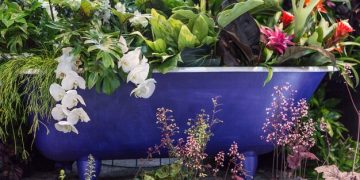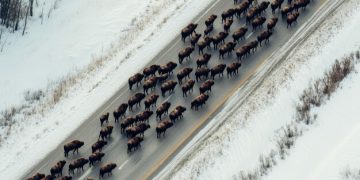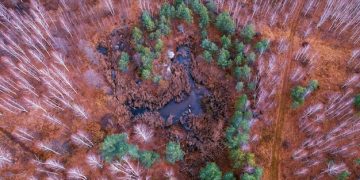Native Plants and Wildlife: A Guide to US Ecosystem Support

Understanding the Importance of Native Plants: How They Support Local Wildlife in the US Ecosystem, involves recognizing their vital role in providing food, shelter, and breeding grounds, which are essential for maintaining biodiversity and ecological balance.
Understanding the Importance of Native Plants: How They Support Local Wildlife in the US Ecosystem is crucial for preserving the natural heritage of the United States. Native plants form the base of the food web, providing sustenance and shelter for a wide array of animal species. As habitats shrink and face increasing threats, recognizing the significance of these plants becomes more critical than ever.
The Foundation of Healthy Ecosystems
Native plants are integral to the health and stability of ecosystems across the United States. They have evolved over thousands of years to adapt to the specific climate, soil, and environmental conditions of their region. This long-term adaptation makes them uniquely suited to support local wildlife.
These plants form the basis of intricate food webs, providing sustenance for herbivores, which in turn support carnivores. Without native plants, many animal species would struggle to find the food and shelter they need to survive. Moreover, native plants contribute to soil health, water conservation, and overall ecological resilience.
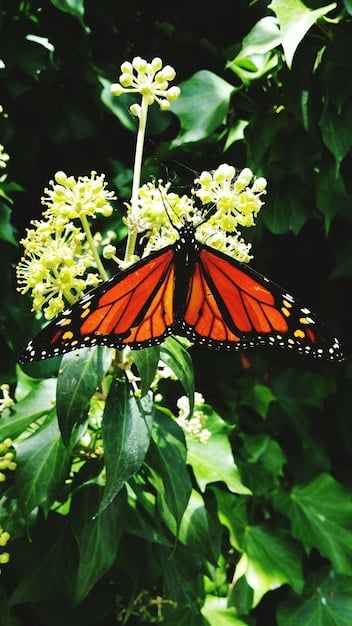
The Role of Native Plants in Supporting Food Webs
Native plants are the primary producers in most terrestrial ecosystems. They convert sunlight into energy through photosynthesis, creating the foundation for all other life forms. These plants provide food for a wide range of herbivores, from insects and caterpillars to deer and rabbits.
Shelter and Nesting Sites
Beyond food, native plants offer crucial shelter and nesting sites for wildlife. Trees provide nesting cavities for birds and mammals, while shrubs and grasses offer cover from predators. Native plants also create microclimates, providing cooler temperatures in the summer and warmer temperatures in the winter.
- Native trees: Offer nesting sites for birds and mammals.
- Shrubs and grasses: Provide cover from predators.
- Microclimates: Regulate temperatures for various species.
By understanding the importance of native plants in these roles, we can better appreciate their significance in maintaining healthy and vibrant ecosystems. They are not merely decorative elements in our landscapes; they are essential components of a functioning and thriving natural world.
Benefits of Native Plants for Local Wildlife
Native plants provide various benefits for local wildlife, contributing to biodiversity and the overall health of ecosystems. These benefits are far-reaching and include food, shelter, and specialized relationships with specific species.
By planting native plants in our gardens and landscapes, we can create valuable habitats that support local wildlife populations. These plants can provide food sources, nesting sites, and protection from predators, all of which are essential for survival.
Providing Essential Food Sources
Native plants are adapted to the local climate and soil conditions, making them more resilient and requiring less maintenance than non-native species. They often produce fruits, seeds, nuts, and nectar that are specifically adapted to the feeding habits of local wildlife.
Creating Shelter and Nesting Habitats
Many native plants offer shelter and nesting sites for a variety of animals. Trees provide nesting cavities for birds and squirrels, while shrubs and grasses offer protection from predators and harsh weather conditions. Native plants also support a diverse community of insects, which serve as a crucial food source for birds and other animals.
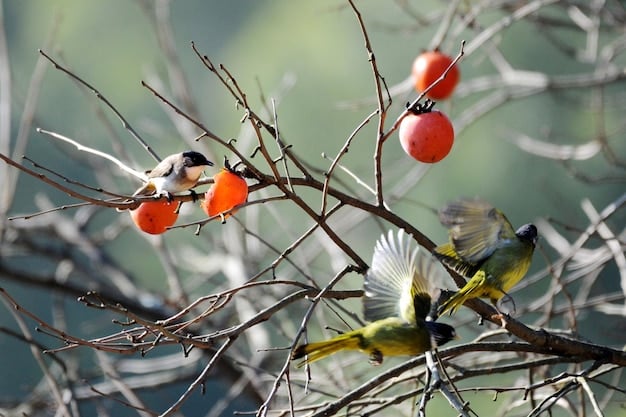
- Resilient: Require less maintenance.
- Diverse food sources: Fruits, seeds, nuts, and nectar.
- Shelter: Protection from predators and weather.
Ultimately, the benefits of native plants extend beyond the immediate needs of wildlife. They contribute to the overall health and stability of ecosystems, helping to maintain biodiversity and ecological balance. By choosing native plants for our landscapes, we can support local wildlife and create a more sustainable environment.
Specific Examples of Native Plants Supporting Wildlife
Several native plants are particularly beneficial for supporting wildlife in the United States. These plants provide essential resources such as food, shelter, and nesting sites for a variety of animal species.
Understanding the specific relationships between native plants and wildlife can help us make informed choices when selecting plants for our gardens and natural areas. By choosing plants that support local wildlife, we can contribute to the health and biodiversity of our ecosystems.
Milkweed and Monarch Butterflies
Milkweed is a vital food source for monarch butterflies. Monarch caterpillars feed exclusively on milkweed leaves, and adult butterflies rely on milkweed nectar for energy. Planting milkweed is crucial for supporting monarch populations, which have been declining in recent years.
Oak Trees and Acorns
Oak trees are a keystone species in many ecosystems, providing food and shelter for a wide range of animals. Acorns, the nuts produced by oak trees, are a primary food source for squirrels, deer, turkeys, and other wildlife. These trees also offer nesting sites for birds and mammals, contributing to overall habitat diversity.
- Milkweed: Essential for monarch butterflies.
- Oak trees: Provide food and shelter for numerous species.
- Serviceberry: Attracts birds with its berries.
By planting these and other native plants, we can provide essential resources for local wildlife and support healthy ecosystems. These plants contribute to the overall biodiversity and resilience of our natural areas and gardens.
Creating a Native Plant Garden for Wildlife
Creating a native plant garden is a rewarding way to support local wildlife and enhance the beauty of your landscape. By choosing native plants that are adapted to your region’s climate and soil conditions, you can create a thriving habitat for a variety of animal species.
Designing a native plant garden involves careful planning and consideration of the needs of both plants and wildlife. By providing food, shelter, and water, you can create a welcoming environment that supports biodiversity and ecological balance.
Planning Your Garden Design
Before planting, it’s essential to assess your site’s conditions, including sunlight exposure, soil type, and drainage. Choose native plants that are well-suited to these conditions, and consider the mature size of each plant to ensure adequate spacing.
Providing Food, Water, and Shelter
To attract wildlife, incorporate plants that provide food sources, such as berries, seeds, and nectar. Provide a water source, such as a birdbath or small pond, and create shelter by planting dense shrubs and trees. Consider adding nesting boxes for birds and other animals.
- Assess site conditions: Sunlight, soil, and drainage.
- Provide food: Berries, seeds, and nectar-rich plants.
- Offer shelter: Dense shrubs and trees.
With careful planning and attention to detail, you can create a native plant garden that supports a variety of wildlife species while enhancing the beauty of your landscape. These gardens can contribute to the overall health and biodiversity of your local ecosystem.
The Economic and Environmental Benefits of Native Plants
Beyond their aesthetic and ecological value, native plants offer significant economic and environmental benefits. By choosing native plants over non-native species, we can reduce our reliance on fertilizers, pesticides, and excessive watering, saving money and protecting the environment.
Native plants are well-adapted to local conditions, making them more resilient and requiring less maintenance. They also contribute to soil health, water conservation, and carbon sequestration, all of which have positive economic and environmental impacts.
Reducing Maintenance Costs
Native plants require less water, fertilizer, and pesticide inputs than non-native species. This can translate into significant cost savings for homeowners, businesses, and municipalities. By reducing our reliance on these inputs, we can also minimize our environmental impact.
Conserving Water and Improving Soil Health
Native plants have deep root systems that help to improve soil structure, increase water infiltration, and reduce erosion. They also play a crucial role in carbon sequestration, helping to mitigate climate change. By supporting native plant communities, we can enhance the resilience of our ecosystems and protect our natural resources.
- Reduced maintenance: Less water, fertilizer, and pesticides.
- Water conservation: Deep root systems improve water infiltration.
- Carbon sequestration: Mitigating climate change.
Ultimately, investing in native plants is an investment in a more sustainable future. These plants offer a wide range of economic and environmental benefits, contributing to the health and well-being of our communities and ecosystems.
Threats to Native Plant Communities and Wildlife
Native plant communities and the wildlife that depend on them face a variety of threats, including habitat loss, invasive species, and climate change. These threats can disrupt ecological processes, reduce biodiversity, and ultimately lead to the decline of both plant and animal populations.
Understanding the specific threats facing native plant communities is crucial for developing effective conservation strategies. By addressing these threats and implementing sustainable practices, we can help to protect native plants and the wildlife that rely on them.
Habitat Loss and Fragmentation
Habitat loss is one of the most significant threats to native plant communities. As land is developed for agriculture, housing, and infrastructure, native habitats are often destroyed or fragmented. This can isolate plant and animal populations, reducing genetic diversity and increasing the risk of extinction.
Invasive Species and Climate Change
Invasive species can outcompete native plants for resources, altering ecosystem structure and function. Climate change can also have profound impacts on native plant communities, altering temperature and precipitation patterns and increasing the frequency of extreme weather events.
- Habitat loss: Destroys or fragments native habitats.
- Invasive species: Outcompete native plants.
- Climate change: Alters temperature and precipitation patterns.
By addressing these threats and implementing conservation measures, we can help to protect native plant communities and the wildlife that rely on them. This includes habitat restoration, invasive species management, and efforts to mitigate climate change.
How To Champion Native Plants Outside Your Home
Advocating for native plants extends beyond personal gardens; it involves community engagement and promoting awareness. Participating in local initiatives, educating others, and supporting policies contribute to conservation efforts.
Engaging in community projects and education programs can broaden the impact of native plant advocacy. Collaborative efforts strengthen the support network for maintaining local biodiversity and environmental health.
Participate in Community Based Projects
Volunteer in local restoration initiatives in parks, nature reserves, or community gardens to actively contribute to native plant conservation. These projects provide hands-on experience and networking opportunities.
Educate Your Community
Organize workshops, seminars, or guided walks to educate others about the ecological importance of native plants. Sharing knowledge fosters appreciation and encourages others to take action.
- Advocate to local government or neighborhood associations to incorporate native plants into public landscaping projects.
- Support organizations that promote biodiversity to gain access to advocacy tools, native plant catalogs, and educational materials, enhancing outreach and conservation efforts.
Through collaborative efforts, advocacy, and education, promoting native plants ensures greater conservation, enhances ecosystem resilience, and fosters community stewardship.
| Key Point | Brief Description |
|---|---|
| 🌱 Ecosystem Support | Native plants are fundamental for healthy ecosystems. |
| 🦋 Wildlife Benefits | Provide food, shelter, and nesting environments for wildlife. |
| 💧 Economic Savings | Need less fertilizer and water, saving resources. |
| 🌳 Environmental Impact | Help in water conservation and carbon sequestration. |
Frequently Asked Questions
▼
Native plants provide the food and shelter that local wildlife species have evolved to depend on. They are essential for the survival and reproduction of many animals.
▼
Consult local plant guides, botanical gardens, or native plant societies for information on native species in your region. Online resources can also help with identification.
▼
Milkweed is crucial for monarch butterflies, while coneflowers and asters attract bees and other pollinators. Native sunflowers and goldenrods are also excellent choices.
▼
Invasive species outcompete native plants for resources like sunlight, water, and nutrients, which can lead to the decline or elimination of native plant populations.
▼
Plant native plants in your garden, remove invasive species, support local conservation organizations, and advocate for policies that protect native habitats can help preservation.
Conclusion
In conclusion, understanding the importance of native plants: how they support local wildlife in the US ecosystem, highlights the crucial role these plants play in maintaining ecological balance, supporting biodiversity, and enhancing the resilience of our environment. By recognizing the numerous benefits of native plants, we can make informed choices in our landscapes, gardens, and communities to promote a more sustainable and thriving future for both wildlife and ourselves.

